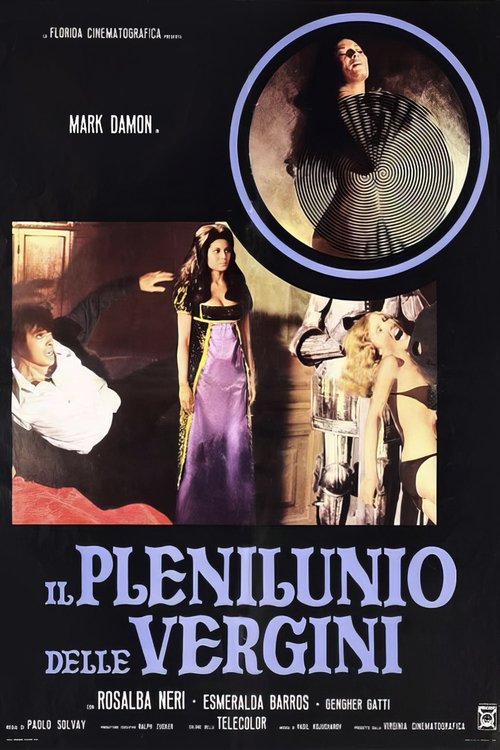RG
Roberto Giacomelli
•"Il plenilunio delle vergini"
Franz Schiller is captivated by the mythical ring of the Nibelungs, a jewel that grants incredible powers to whoever possesses it. Assisted in his search by his scientist twin brother Karl, Franz discovers that the ring is in Transylvania, in the possession of Countess De Vries, who resides in what was once the castle of Vald Tepes, known as Dracula. Franz travels there but immediately faces the hostility of the locals and learns that in a few days, the Full Moon of the Virgins will occur—a ritual that takes place every fifty years, during which the moon turns red and five virgins vanish from the village. Upon reaching the countess's castle, Franz discovers that the woman is directly connected to the disappearance of the virgins and that the castle is inhabited by vampires.
"Il plenilunio delle vergini" can be considered one of the great "underrated" works of Italian genre cinema... yes, underrated, because at the time it was harshly criticized like many similar films, with the difference that Batzella's work has not been reappraised in later years as many of its contemporaries have. Yet, "Il plenilunio delle vergini" is a fascinating piece, naïve like many horrors some would call dated, but full of atmosphere and that boldness that no longer exists today.
First of all, we can easily consider "Il plenilunio delle vergini" the best work of Batzella, who here used the pseudonym Paolo Solavay, a director who never enjoyed a great reputation and who is mostly remembered today for one of the most delirious Nazi-exploitation films in Italian cinema, "La bestia in calore". It is said that on this occasion Batzella/Solvay was "helped" by Aristide Massaccesi, credited as cinematographer, though those who worked on the film claim he did much more. There are many behind-the-scenes stories surrounding "Il plenilunio delle vergini" that make it fascinating even from a production perspective. Apparently, the film was strongly pushed by Mark Damon, the actor from "I tre volti della paura", who here plays the dual role of protagonist and his brother. Damon was deeply invested in this film, having contributed to the screenplay and insisting on an American distributor who had pre-purchased the U.S. rights; it's even said that Damon himself, under a pseudonym, bought the film's pre-sales in America to ensure its production... In short, "Il plenilunio delle vergini" perhaps belongs more to the actor who starred in it than to the Italian producers. In reality, Damon is rather mediocre, acting-wise, lacking command of the scene and the charisma required for his double role (for which he was doubled by Sergio Pislar). Supporting the film is Rosalba Neri, the striking face (and body) of many westerns and Decamerotici of that era. Neri plays the evil Countess De Vries, a character clearly modeled on the historical figure of Erzsebet Bathory, the so-called Blood Countess who bathed in blood to stay young; indeed, in one of the most memorable scenes of "Il plenilunio delle vergini", Neri is covered in human blood by her servant/lover (Esmeralda Barros) and emerges nude and blood-soaked from the tub as smoke swirls around her.
"Il plenilunio delle vergini" thrives on individual sequences rather than overall coherence, as the story itself is rather thin and modeled after the familiar Dracula plot, with the only novelty being the ring of the Nibelungs, which, in terms of creativity, doesn't go far beyond the trivial. It's the details that make the difference: the aforementioned blood bath, the quite explicit and well-directed erotic scenes, the unnatural movement of the countess, the long final scene of the virgins' sacrifice. Moments we now watch with nostalgia and longing.
In many ways—from the general atmosphere, to the heavy use of violence and eroticism, and the presence of vampires—"Il plenilunio delle vergini" brings to mind some contemporary Hammer productions, also geared toward exploitation, but with a certain class.
A film to rediscover and re-evaluate.

